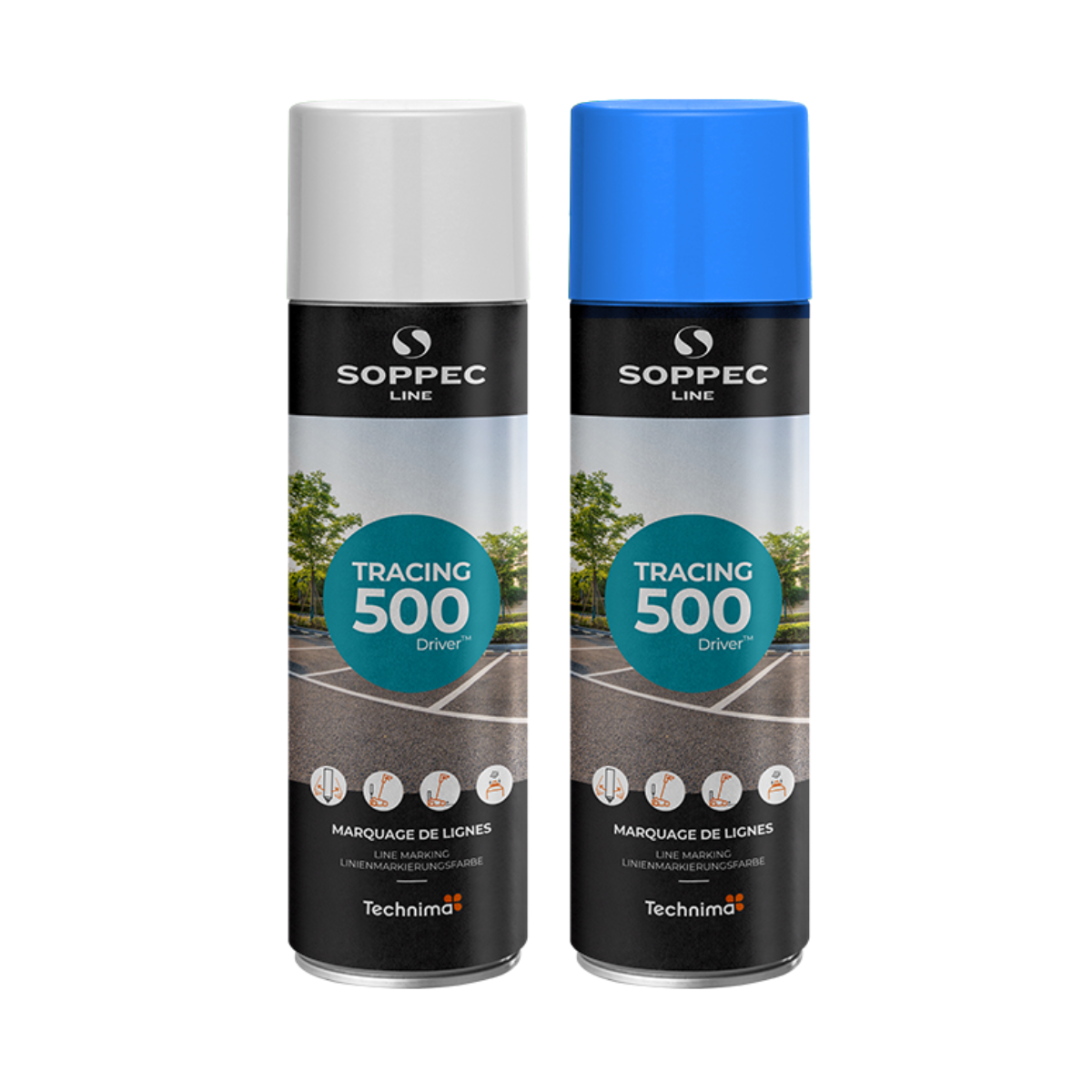Excellent adhesion.
Good weather resistance and fast drying : 15 to 20 minutes or less.
Crisp, sharp lines thanks to its purpose designed nozzle.
Application temperature : from +5°C to 30°C.
Binder: acrylic.
Pigments: mineral and organic, lead and cadmium-free.
Solvents: a complex blend free from chlorinated solvents and aromatic compounds (toluene,xylene, etc).
Propellant: a specific mix of isobutane andpropane
Use head down, adjust the position of the aerosolin the equipment used to give an application height that produces the desired line width.
BEFORE USE: Shake the can vigorously in anupside down position to thoroughly mix the paint, continue shaking even after having clearly heardthe ball bearings.
AFTER USE: Purge head up (until gas only comesout) to clean the valve and nozzle.
Whatever the nature of the surface, the following conditions are essential for the optimal application of TRACING®.
Correct preparation of the surface to be painted is imperative to obtain excellent paint adhesion. Thoroughly clean the surface to ensure that it is free from dust, dirt, grease, etc.
Relative humidity should be between 10% and 50%.
The application temperature should not be below 5°C.
For a good quality line, the first coat should be applied quickly (print layer); on the other hand, the second and optional third coats should be applied more slowly to obtain the desired coverage.
CONCRETE : Before applying TRACING® to a new concrete surface, allow a minimum of 3 to 4 weeks for complete drying (French building trades standards) and the elimination of acidity.
ASPHALT : It is advisable to wait at least 15 days before line marking a new asphalt surface in order to avoid any alteration to the quality of the marking.
Special conditions applicable to “synthetic” (plastic, PVC, varnishes) and painted (epoxy, PU) floor surfaces. In this domain, there are several different types of paint and the paint used for the floor may be incompatible with TRACING® (resulting in poor adhesion). We therefore recommend carrying outa test before hand for these specific types of surface.

